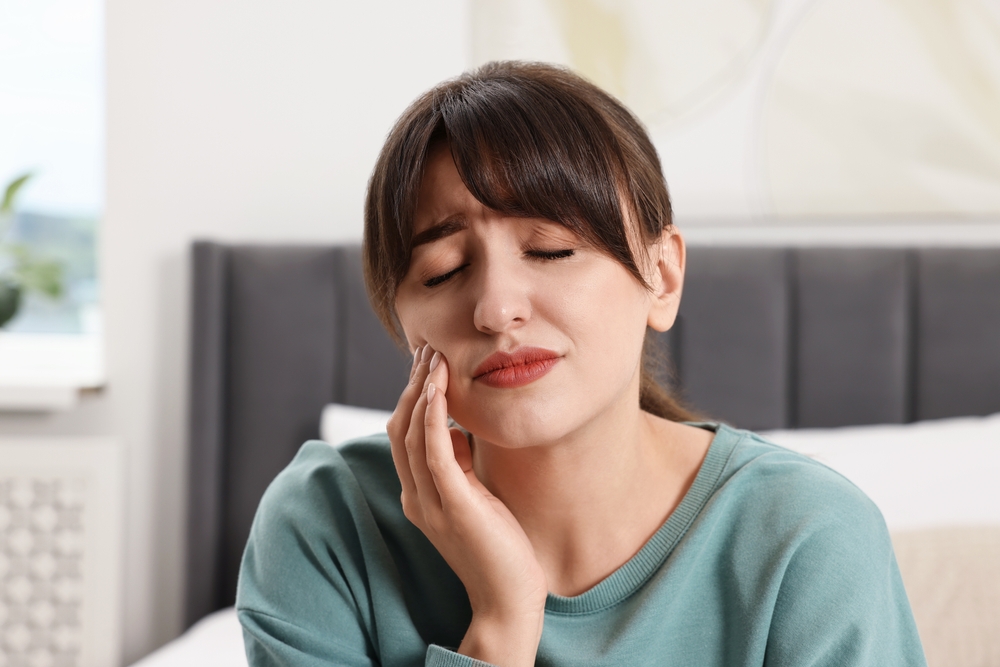Botox Injections for Bruxism to Give Lasting Relief from Jaw Pain and Dental Damage
Waking up with a sore jaw, frequent headaches, or tightness in the face can be more than just a passing annoyance — these may be signs of bruxism, or teeth grinding. This condition affects people of all ages and can occur while awake or asleep. Left untreated, it can cause persistent discomfort, dental damage, and even changes to your facial appearance.
At Elegance Aesthetics in Roland Park, MD, we offer a proven, minimally invasive treatment option: Botox injections for bruxism. By relaxing the overactive jaw muscles responsible for grinding and clenching, Botox provides significant relief and helps prevent long-term oral health complications.
Understanding Bruxism
Bruxism is the medical term for involuntary grinding or clenching of the teeth. It can happen during the day, but for many people, it occurs at night without them even realizing it. The repeated strain of grinding can impact teeth, gums, jaw joints, and surrounding muscles.
Common causes include:
- High stress or anxiety levels
- Misaligned teeth or bite issues
- Side effects of certain medications, such as antidepressants
- Sleep disorders like sleep apnea
- Lifestyle factors, including caffeine or alcohol overuse
Typical symptoms may include:
- Jaw soreness or stiffness upon waking
- Headaches, especially in the temples
- Pain radiating to the face, ears, or neck
- Increased tooth sensitivity
- Flattened or chipped teeth
- Clicking or popping in the jaw joints
Bruxism not only affects oral health, it can also disrupt sleep quality, increase daily discomfort, and contribute to premature wear on the teeth.
Physical and Cosmetic Effects of Teeth Grinding
Chronic bruxism places intense strain on the masseter muscles, the large muscles at the sides of the jaw responsible for chewing. Over time, these muscles can enlarge from overuse, a condition called masseter hypertrophy. This often results in a more square or wider jawline, which some people may find less flattering.
The constant grinding and clenching can also accelerate tooth enamel wear, making teeth more prone to chips, fractures, or decay. In severe cases, the damage may require extensive restorative dental work.
The combination of functional issues, pain, and changes to facial appearance can make bruxism a significant quality-of-life concern.
Limitations of Traditional Treatments
Several traditional approaches to bruxism aim to protect the teeth or reduce discomfort, but they often fall short of addressing the root cause: overactive jaw muscles.
Common treatments include:
- Night guards or splints: These custom dental devices protect teeth from damage but do not prevent muscle contractions or fully relieve jaw tension.
- Anti-inflammatory medications: NSAIDs may temporarily ease pain but are not a long-term solution and can have side effects with regular use.
- Stress management techniques: While beneficial, they may not be enough to stop grinding in all cases.
For individuals who have tried these methods without lasting relief, Botox injections offer an alternative that directly targets the muscle activity driving the problem.
Botox as a Modern Solution for Bruxism
Botox, short for botulinum toxin type A, is a purified protein widely known for smoothing facial lines. It also has a long history in medical treatments, including migraine relief and muscle spasm reduction. In the case of bruxism, Botox is injected into the masseter muscles to reduce their overactivity.
By blocking the nerve signals that trigger excessive muscle contraction, Botox allows the jaw muscles to relax. This decrease in activity:
- Reduces or eliminates unconscious grinding and clenching
- Relieves jaw pain, facial tension, and headaches
- Helps prevent further tooth wear or damage
- Can subtly slim and contour a square jawline caused by muscle enlargement
Treatment is highly targeted, so normal functions like speaking and chewing remain intact.
Teeth Grinding Treatment Process at Elegance Aesthetics, Roland Park
Step 1: Consultation
Your first visit begins with a detailed consultation. One of our licensed practitioners will review your medical history, examine your jaw muscles, and discuss your symptoms and goals. We’ll determine if Botox is the right choice for you or if another approach would better meet your needs.
This appointment is also the perfect time to ask questions about the procedure, expected results, and maintenance schedule.
Step 2: Treatment Day
On the day of your appointment, the treatment area is gently cleansed. Most clients find Botox injections well-tolerated, but a topical numbing cream can be applied for added comfort.
Using a fine needle, your practitioner will inject small amounts of Botox directly into the masseter muscles on each side of the jaw. The injections take just minutes to perform.
The precision of our technique ensures that the Botox only affects the overactive muscle fibers responsible for grinding — not your ability to eat or speak normally.
Step 3: Aftercare
Because Botox for bruxism is noninvasive, there is no downtime. You can return to work, errands, or social plans right away. We recommend avoiding rubbing the treated area, strenuous workouts, or lying face down for several hours after treatment.
Results and Longevity
Some clients notice relief from jaw tension within a few days, but the full effect generally develops over one to two weeks. You can expect reduced clenching, less discomfort, and decreased frequency of grinding episodes.
Results typically last three to four months. For continued relief, we’ll help you establish a maintenance schedule that fits your needs and lifestyle.
Who Is a Good Candidate?
Botox for bruxism may be an option if you:
- Experience frequent grinding or clenching that causes pain or dental damage
- Have tried night guards or other methods without full relief
- Suffer from tension headaches linked to jaw muscle strain
- Notice an overly square jawline from enlarged masseter muscles
Botox is not recommended during pregnancy or breastfeeding, or for those with certain neuromuscular disorders. We’ll review your medical history carefully during your consultation to ensure this is a safe option for you.
Safety and Possible Side Effects
When performed by experienced injectors, Botox for bruxism is a safe and precise treatment. Most clients experience no issues beyond mild tenderness, swelling, or temporary redness at the injection sites. These effects typically fade within a few days.
Rare side effects will be discussed during your consultation so you can make an informed decision.
Why Choose Elegance Aesthetics in Roland Park?
- Expertise: Our practitioners have advanced training in both cosmetic and therapeutic Botox applications.
- Personalized care: Each treatment plan is tailored to your symptoms, facial structure, and goals.
- Comfort-first approach: We take steps to make every appointment as comfortable and stress-free as possible.
- Ongoing support: We offer guidance on maintenance treatments and lifestyle strategies to help you get the most from your results.
Lifestyle Tips to Support Your Results
While Botox can significantly reduce grinding, adopting healthy habits can further protect your teeth and jaw:
- Manage stress with regular exercise, mindfulness practices, or relaxation techniques.
- Avoid excessive caffeine and alcohol, especially in the evening.
- Maintain regular dental checkups to monitor your oral health.
- Break habits that strain the jaw, such as chewing ice, gum, or pens.
Book Botox for Bruxism in Roland Park, MD
Bruxism doesn’t have to keep causing you pain, damaging your teeth, or affecting your appearance. With Botox treatment at Elegance Aesthetics in Roland Park, you can relax overworked jaw muscles, protect your smile, and enjoy lasting relief.
Contact us today to schedule your consultation and take the first step toward a more comfortable, confident life.
Teeth Grinding Treatment FAQs
What is bruxism?
Bruxism is the involuntary grinding or clenching of teeth, which can occur during the day or night. It often leads to jaw pain, headaches, and dental damage if left untreated.
What causes teeth grinding?
Causes can include stress, misaligned teeth, medication side effects, and sleep disorders. Sometimes, multiple factors contribute at the same time.
How does Botox help with bruxism?
Botox relaxes the overactive jaw muscles that cause grinding and clenching. By reducing muscle activity, it eases pain and helps prevent further tooth wear.
How long do results last?
Most clients enjoy relief for three to four months. Regular treatments can help maintain the benefits over the long term.
Does the treatment hurt?
The injections are quick, and discomfort is minimal. A numbing cream can be applied beforehand if desired.
Can Botox cure bruxism?
Botox doesn’t cure the condition, but it significantly reduces symptoms and allows you to address underlying causes more effectively.
Are there side effects?
Mild swelling, tenderness, or redness at the injection sites may occur. These effects are temporary and usually resolve within a few days.
Can it help with TMJ pain?
Yes, Botox can also be used to relieve discomfort from temporomandibular joint (TMJ) disorders by reducing jaw muscle tension.
Is there downtime?
No downtime is needed. You can return to normal activities right after treatment, following basic aftercare instructions.
Who should avoid Botox treatment for bruxism?
People who are pregnant, breastfeeding, or have certain neuromuscular disorders should not receive Botox. Your provider will confirm your suitability during the consultation.



